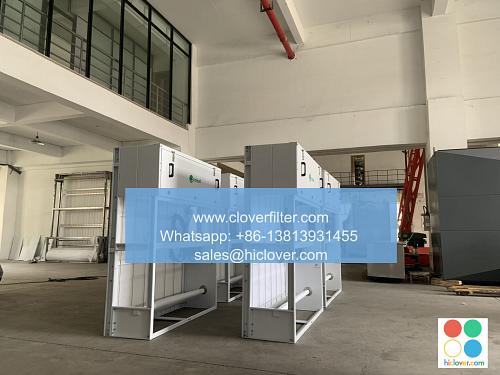Understanding the Science Behind Automatic Roll Air Filters in Biotech Labs

The use of automatic roll air filters in biotech labs has become a crucial aspect of maintaining a contamination-free environment. These filters play a vital role in removing airborne contaminants, such as dust, bacteria, and viruses, from the air, ensuring the quality and integrity of biological samples and experiments. In this article, we will delve into the science behind automatic roll air filters, highlighting their HEPA filtration technology, ultra-low particulate air (ULPA) filtration, and aerodynamic design, and explore their various application areas in biotech labs.
How Automatic Roll Air Filters Work
Automatic roll air filters utilize a self-contained filtration system that consists of a rolled filter media, a motorized drive system, and a housing unit. The rolled filter media is designed to unwind from a spool, allowing for continuous filtration without the need for manual replacement. The motorized drive system ensures a consistent airflow rate, while the housing unit provides a secure and hermetically sealed environment for the filtration process. The air purification process involves the removal of airborne contaminants through a combination of interception, impaction, and diffusion, resulting in ultra-clean air with virtually zero particulate matter.
Application Areas in Biotech Labs
Automatic roll air filters have a wide range of application areas in biotech labs, including:
* Cell culture laboratories: maintaining a contamination-free environment for cell growth and experimentation
* Microbiology laboratories: preventing the spread of airborne microorganisms and ensuring accurate test results
* Genetic engineering laboratories: protecting sensitive biological samples and equipment from contamination
* Vaccine development laboratories: ensuring the quality and integrity of vaccine production processes
* Pharmaceutical manufacturing facilities: maintaining a controlled environment for the production of pharmaceuticals and medical devices
Key Benefits and Features
The use of automatic roll air filters in biotech labs offers several key benefits and features, including:
* High-efficiency particulate air (HEPA) filtration: removing 99.97% of particles as small as 0.3 microns
* Ultra-low particulate air (ULPA) filtration: removing 99.9995% of particles as small as 0.12 microns
* Low operating costs: reducing the need for manual filter replacement and minimizing energy consumption
* Compact design: allowing for easy integration into existing laboratory settings
* Real-time monitoring: providing continuous feedback on filter performance and air quality
Conclusion
In conclusion, automatic roll air filters play a vital role in maintaining a contamination-free environment in biotech labs. Their advanced filtration technology, aerodynamic design, and self-contained filtration system make them an essential component of any biotech laboratory. By understanding the science behind these filters and their various application areas, laboratory professionals can ensure the quality and integrity of their biological samples and experiments, while maintaining a safe and healthy working environment. Whether you are working in cell culture, microbiology, genetic engineering, or pharmaceutical manufacturing, automatic roll air filters are an indispensable tool for achieving your research and development goals.

